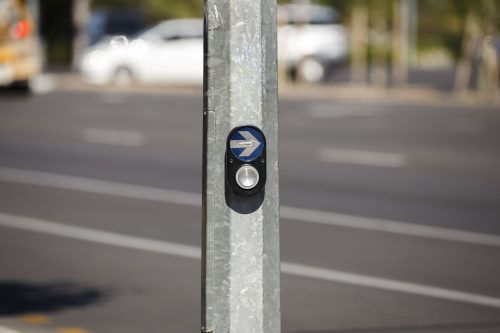 Jaywalking, or crossing a roadway outside of an authorized crosswalk, is a common occurrence in California — and around the country. It might be aggravating for a driver to be forced to come to a halt because someone is crossing the street illegally. It’s possible that you won’t notice the pedestrian until it’s too late. Who is to blame if this results in a pedestrian collision — the jaywalker or the driver?
Jaywalking, or crossing a roadway outside of an authorized crosswalk, is a common occurrence in California — and around the country. It might be aggravating for a driver to be forced to come to a halt because someone is crossing the street illegally. It’s possible that you won’t notice the pedestrian until it’s too late. Who is to blame if this results in a pedestrian collision — the jaywalker or the driver?
The answer isn’t as straightforward as either/or. In rare cases, a car can be held liable for an accident even if the pedestrian was crossing the street illegally. In other circumstances, it may be the pedestrian who is at blame. Continue reading to discover more about these specific sorts of automobile collisions. If you believe you have legal reasons, contact The Law Offices of Larry H. Parker at 800-333-0000.
Laws governing pedestrians in California
Motorists and pedestrians in the state of California are both obligated to take due care and caution when on the road. Any pedestrian crossing a marked crosswalk or an unmarked crosswalk at an intersection must give the right of way to drivers. If there is an urgent danger, pedestrians must not leave the curb or safe zone and walk into the path of a vehicle.
Accidents caused by jaywalking are governed by certain rules
In California, it is illegal to jaywalk. If a pedestrian crosses the street outside of a marked crosswalk, they must give automobiles the right of way. However, if a pedestrian is hurt while jaywalking, the motorist may still be held liable. This is because, even if the pedestrian is not in a crosswalk, the motorist must use caution.
If the driver was speeding, inebriated, distracted, or not paying attention to the road, both the driver and the pedestrian could be held responsible.
Comparative negligence’s importance
Fault is not treated as a black-and-white issue in California. A person’s percentage of blame equals their percentage of responsibility for damages in a comparative negligence case. For example, if a person was 50% to blame for their own accident, they would be entitled to the remaining 50% of the damages. If they were 20% at fault, they would be able to recoup the remaining 80%.
Accidents involving pedestrians are risky for everyone
Pedestrian accidents can have far-reaching consequences for more than just the driver and the victim. If a car swerves, it can disrupt traffic, spark chain reactions, and even injure individuals walking down the sidewalk. If you have been injured in a pedestrian collision, you should speak with an attorney.
The Law Offices of Larry H. Parker can provide you with a free legal consultation by calling 800-333-0000. Give us a call today and we’ll walk you through your alternatives.



